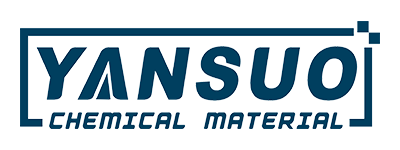Application of low refractive index UV materials in the fields of optics and electronics
Application of low refractive index UV materials in the fields of optics and electronics
In today's rapidly developing modern optical and electronic technology, low refractive index UV materials are increasingly becoming key materials in various fields due to their unique optical properties and fast curing characteristics. This article will provide a detailed introduction to the characteristics, advantages, and applications of low refractive index UV materials in fields such as optical fibers, optical coatings, display technology, and electronic packaging.
Characteristics and advantages of low refractive index UV materials
1. Low refractive index
Low refractive index UV materials have a lower refractive index (usually between 1.3-1.5) and can be used in combination with high refractive index materials to reduce light reflection at interfaces, thereby improving light transmission efficiency. This is particularly important in optical systems, as reducing reflection means more light can pass through the system, thereby improving its overall performance.
2. High transparency
These materials have high transmittance in the visible and ultraviolet light regions, ensuring efficient transmission of light signals without absorption or scattering.
3. Rapid curing
Low refractive index UV materials can quickly cure under ultraviolet light irradiation, making them highly suitable for efficient production processes, saving time and costs.
4. Strong weather resistance
Low refractive index UV materials can maintain stable performance over long-term use and are not easily affected by environmental factors such as humidity and temperature changes.
application area
1. Fiber optic
In optical fiber communication systems, low refractive index UV materials are mainly used for the cladding and protective coating of optical fibers. Low refractive index cladding materials can reduce the reflection loss between the fiber core and cladding, thereby improving optical transmission efficiency. At the same time, these materials also provide necessary mechanical protection to ensure that the optical fibers are not damaged during installation and use.
2. Optical coating
Low refractive index UV coatings are widely used in surface treatment of optical components, such as lenses, lenses, and optical windows. Low refractive index coatings can significantly reduce interface reflection, improve the transmittance of optical components, enhance image quality and brightness. These coatings are indispensable in optical equipment such as photography, microscopes, telescopes, etc.
3. Display technology
Low refractive index UV materials are used as protective and interface layers in liquid crystal displays (LCD) and organic light-emitting diode (OLED) displays. These materials can not only improve the optical performance of displays, such as brightness and contrast, but also provide good mechanical protection and extend the lifespan of displays.
4. Electronic packaging
Low refractive index UV materials also have important applications in the field of electronic packaging. They can be used as transparent packaging materials to protect optoelectronic devices from environmental influences while ensuring that the optical performance of the devices is not compromised. The characteristics of low refractive index and high transparency make these materials ideal choices for devices such as LEDs and photoelectric sensors.
Typical products
1. Low refractive index UV adhesive
These adhesives are used for bonding and packaging optical components, with good optical transparency and mechanical properties, which can effectively improve the reliability and service life of products.
2. Low refractive index UV coating
A low refractive index coating used on the surface of optical components can significantly reduce reflection, improve the efficiency and imaging quality of optical systems.
conclusion
Low refractive index UV materials have shown broad application prospects in fields such as optical fibers, optical coatings, display technology, and electronic packaging due to their unique optical properties and fast curing characteristics. These materials not only improve the overall efficiency of optical systems, but also provide necessary mechanical and environmental protection, which is an important support for the development of modern optical and electronic technology. With the continuous advancement of technology, the application of low refractive index UV materials will become more widespread and in-depth, promoting related industries to reach new heights.





